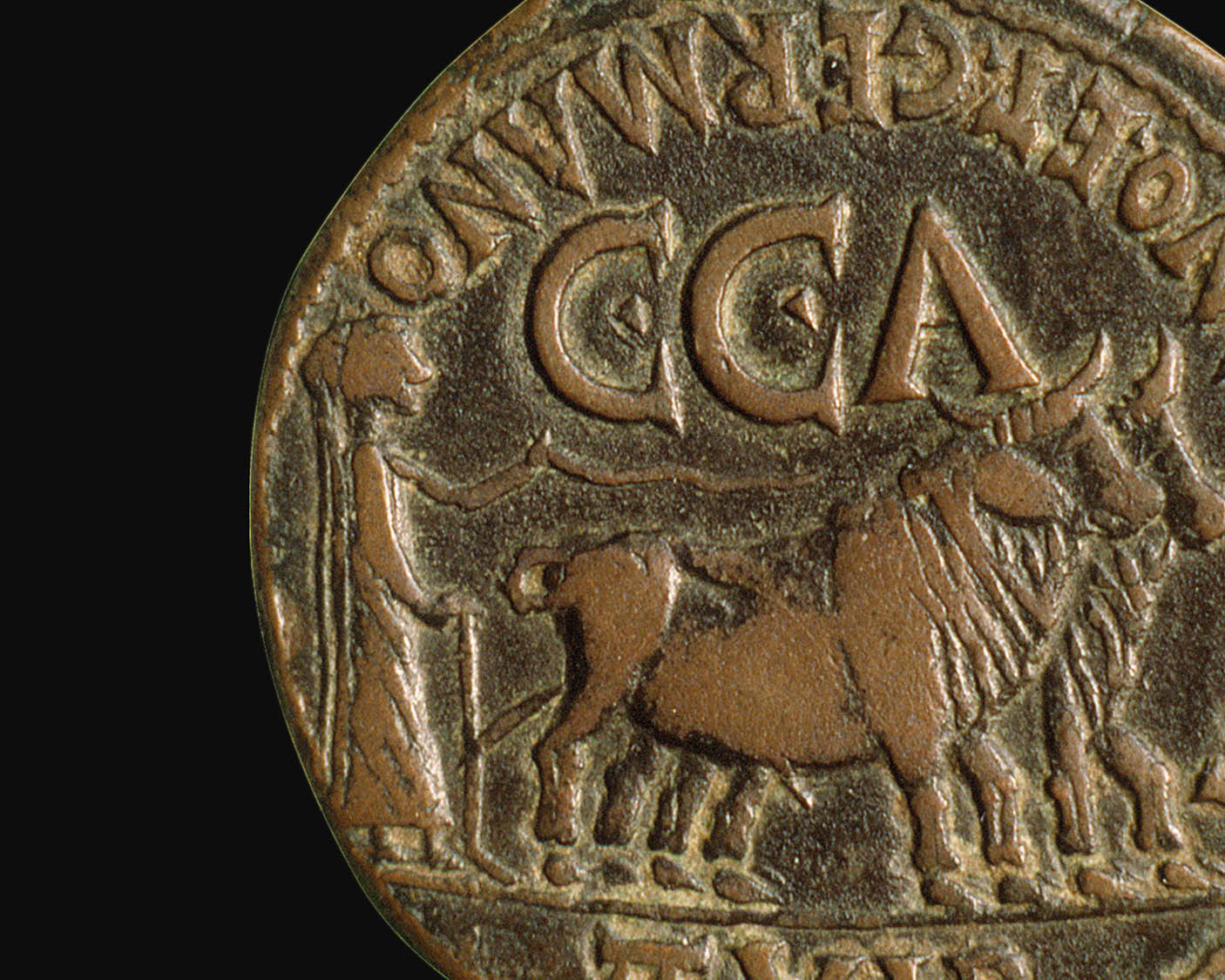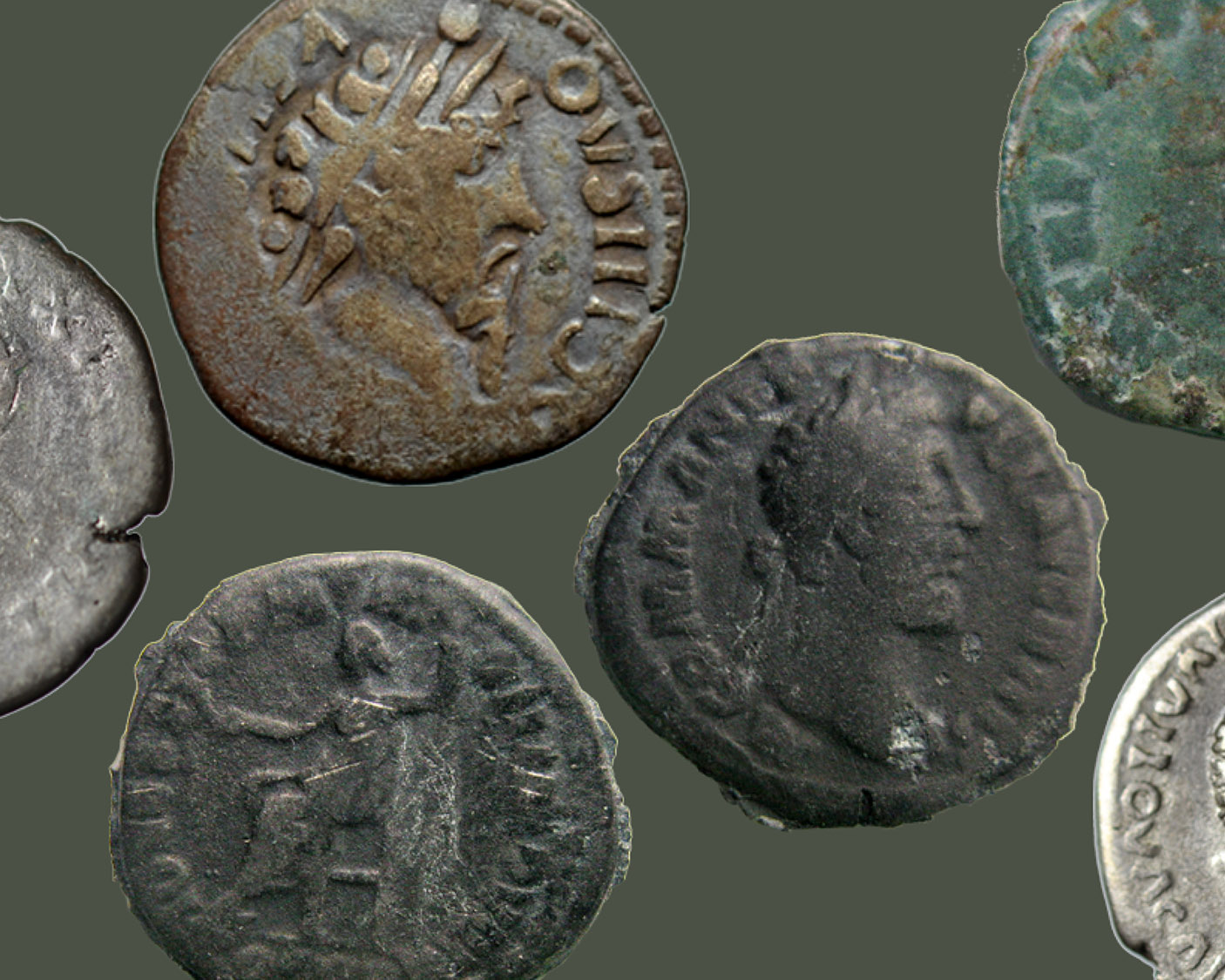An Area of Limited Inflation: The United States
Early Federal America
In 1792, the young United States of America defined its standard unit of value as a dollar worth 24.057 g of pure silver. Theoretically convertible banknotes were issued by about 1,600 local state-chartered banks. Gold was only sporadically minted. Its unit of value was called the eagle, worth ten silver dollars. Usually, half eagle coins of 5 dollars were minted at a standard of 135 grains of 91.67% fineness, equivalent to 8.01 g or 1.6038 g of pure gold per dollar. As foreign coins still enjoyed legal tender status, the incentive for private citizens to have their gold minted was effectively limited. Regular official minting of gold dollars on a larger scale was finally endorsed by Congress in 1849. The gold discoveries made in California beginning in 1848 increased the relative value of silver and led to many silver coins being withdrawn from circulation in order to be melted and sold abroad. As a result, the mint lowered the weight standard of silver in 1853, a measure that proved insufficient to prevent the scarcity of circulating silver coins. Silver discoveries in the 1860s and 1870s inverted the trend, highlighting the challenge implied by bimetallism and “free minting”. Bimetallism persisted until March 14, 1900, when gold was made the sole legal standard, upholding the 1.5 g of pure gold to the dollar (1.67 g of 90% gold) defined by the Coinage Act of January 18, 1837. This was equivalent to $20.67 per ounce of gold.


1 dollar, 1795. Silver, 26.31 g. Philadelphia (ANS 1980.109.2393, bequest of Arthur J. Fecht).


20 dollar, 1856. Gold, 33.42 g. Philadelphia (ANS 1908.93.535, gift of the American Museum of National History, The John Pierpoint Morgan, Sr., Collection).


10 dollar banknote, 1817, issued by a private state-chartered bank, the Bank of the State of New York (ANS 1945.42.177).


1 dollar, 1856. Gold, 1.67 g. Philadelphia (ANS 1980.109.2231, bequest of Arthur J. Fecht).


1/2 dollar, 1858. Silver, 12.42 g. Philadelphia (ANS 1907.242.21, gift of Daniel Parish, Jr.).


1 cent, 1857. Cupronickel, 4.56 g. Philadelphia (ANS 0000.999.3314).
The Civil War
The Confederate States of America Act of March 9, 1861, authorized the issue of Confederate Treasury Notes, yielding an interest rate of 3.65%, with denominations ranging from $50 to $1,000. The American Civil War started on April 12, 1861. Both sides, needing cash to pay for war expenses, started to issue more notes. The first issues of the Federal government (the North) were called “greenbacks” because of the unusual ink color added on their back to make counterfeiting more difficult. The Confederacy soon stopped offering interest rates and paper money convertibility was suspended. As the Confederacy increasingly relied on monetary supply to fund its budget needs, commodity prices rose at a monthly rate of about 10% until March, 1864. Although a currency reform and the recall of about 1/3 of the money supply managed to bring down inflation at that point, the succession of defeats and territory losses could not be compensated any more and by April 1865, prices stood at 92 times their pre-war level. By that time, $1 in gold would purchase $100 in Confederacy Notes. The North was not immune to inflation either, as $1 in gold reached close to $3 in notes in 1865.
Confederacy. 2 dollar note, 1862, Richmond (ANS 0000.999.5784).
Confederacy. 100 dollar note, 1861. Richmond (ANS 0000.999.11859).
The frequent depiction of slaves at work is one of the peculiarities of the notes issued by the Confederacy.
Confederacy. 1,000 dollar note, 1861. Montgomery, Alabama (ANS0000.999.11639).
Union. 10 cent banknote, 1862. New York (ANS 1945.42.149).
Issue of fractional amounts in paper money by private banks was a result of the general hoarding of metal coins during the war.
Union. 25 cent banknote, 1862. New York (ANS 1945.42.150).
Union. 2 dollar legal tender note, 1862. New York (ANS 0000.999.56439).
These federal notes were directly issued by the US government, not convertible into gold. As a result, their value fell to about 40 cents to a metallic dollar.
Union. 5 dollar National Currency banknote, 1865. Bridgeton, New Jersey (loan of the Federal Reserve Bank of New York).
National Banks and the Federal Reserve
The government chartered banks meeting certain qualifications, authorizing them to issue standardized paper money, a system that would survive until the Great Depression.
The Resumption Act of 1875 sought to withdraw the legal tender notes issued during the war by 1879. This led to a controversy between ‘hard money’ advocates and those who thought the greenbacks were good for the economy by increasing the money supply. As the Treasury had accumulated enough precious metal to satisfy the demand for resumption, the public realized that the paper money was as good as gold or silver. The Act of December 23, 1913, created the Federal Reserve banking system, which started to issue a new type of notes that were originally convertible to gold or silver. The Federal Reserve and National banknotes, silver and gold certificates and United States legal tender notes added to the diversity of paper and metal money circulating at the time of the Depression.
100 dollar legal tender note, 1880. Washington, D.C. (ANS 1980.67.24, gift of the Chase Manhattan Bank).
20 dollar, 1928. Gold, 33.44 g. Philadelphia (ANS 1928.196.2).
The weight of this piece is exactly comparable to the 20 dollar coin minted in 1856—a tribute to the monetary stability maintained by the US while all the European countries experienced severe situations of inflation. Still, US prices had doubled between 1914 and 1918.
image?
5 dollar Federal Reserve gold note, 1928. Washington, D.C. (Loan of the Federal Reserve Bank of New York).
image?
20 dollar national banknote, 1929. Washington, D.C. (Loan of the Federal Reserve Bank of New York).
As a result of the severe depression that plagued the US starting in 1929, the country entered a deflationary spiral. The general price index of consumer goods lost 25% between January 1930 and January 1933, implying an annual average rate of negative inflation of -9%. Franklin D. Roosevelt confiscated most of the privately held gold in the country on April 5, 1933, suspended the convertibility of dollars into gold and devalued the dollar from $20.67 to $35 an ounce of gold. This alleviated the deflationary pressures. In January 1941, the consumer price index was still 17.5% lower than in January 1930, showing that inflation had decoupled from the price of gold. The notice that existed on some Federal Reserve Banknotes that they were redeemable in gold was deleted. Only the high-denomination series of 1934 displayed it, as these notes were being used exclusively by the Federal Reserve System to clear intra-government transactions.
image?
500 dollar Federal Reserve banknote, 1934. Washington, D.C. (Loan of the Federal Reserve Bank of New York).
image?
1,000 dollar Federal Reserve gold note, 1934. Washington, D.C. (Loan of the Federal Reserve Bank of New York).
image?
5,000 dollar Federal Reserve banknote, 1934. Washington, D.C. (Loan of the Federal Reserve Bank of New York).
image?
10,000 dollar Federal Reserve gold note, 1934. Washington D.C. (Loan of the Federal Reserve Bank of New York).
Note the orange stamp used to differentiate these notes from the regular issues.
image?
10,000 dollar Federal Reserve banknote, 1934. Washington, D.C. (Loan of the Federal Reserve Bank of New York).
The serial number shows this note was one of the very first notes printed in that rare series.
image?
100,000 dollar Federal Reserve gold note, 1934. Washington, D.C. (Loan of the Federal Reserve Bank of New York).
This is the largest notional value ever printed on a US note, although it never circulated in the public.
1/2 dollar, 1937. Silver, 12.49 g. Philadelphia (ANS 1937.78.1).
This commemorative issue of the Texas Independence Centennial displays the same weight as the half-dollar of 1858. Suspension of gold convertibility had not affected the use of silver.
Post-war Inflation and the End of Convertibility
The Second World War brought back some degree of inflation, since the government had to print money to pay for the war effort. By the end of 1945, consumer prices had risen 28.5% compared to the level at the end of 1940, implying an annual average rate of 6.5%. The general reconstruction effort in Europe and Asia, combined with higher consumer demand in the US, led to more inflation after the war itself: between 1945 and 1948, prices rose by about 10% per annum. At Bretton Woods, in 1944, the gold-dollar exchange standard was devised. Contrary to the pre-1914 gold standard, it did not reintroduce any form of direct gold convertibility to the general public. The US pledged to keep the dollar stable against gold, at $35 an ounce, and to ensure its convertibility at that rate vis-à-vis the other participating countries’ official dollar reserves. The growing balance of account deficits accumulated by the US during the 1960s and a progressive resurgence of inflation from 1968 onward led to the breakdown of the system of limited convertibility in 1971. Interestingly, the US had stopped minting silver coins as early as 1965.
1 dollar silver certificate, 1957. Washington, D.C. (ANS 1978.30.10, gift of D. Saymour).
Silver certificates were discontinued in 1963 and their convertibility into silver halted in 1968.
10 dollar Federal Reserve note, 1963. Washington, D.C. (ANS 2005.5.65, gift of David Menchell).
From this series onward, mentions such as “Will pay to the bearer on demand” or “Is redeemable in lawful money at the United States Treasury, or at any Federal Rerserve Bank” are dropped in favor of the sentence: “This note is legal tender for all debts, public and private”.
1/4 dollar, 1963. Silver, proof, 6.14 g. Philadelphia (ANS 1963.250.4, gift of William L. Clark).
This series was the last to be minted in silver.
Following repeated requests by France to exercise its right to have some proportion of its official dollar reserves converted into gold, President Richard Nixon decided to end the limited gold convertibility of the US dollar on August 15, 1971. From $35 an ounce, gold rapidly jumped to $180 in 1974, then toward $600-700 in 1980. At the same time, inflation picked-up: by 1982, consumer prices stood 117% above their 1974 level, implying an average compounded inflation rate of 9%. Inflation was effectively checked by the then Federal Reserve Bank Chairman Paul Volcker never to resume on that scale. The current situation, with a rapidly rising gold price while inflation remains subdued, is illustrated on the right portion of the chart shown above. Gold and inflation have widely diverged, showing that a resumption of the gold standard would have led the US economy into a deflationary situation.
1 dollar, 1971. Cupronickel-clad copper, 22.96 g. Philadelphia (ANS1972.164.1, gift of C. K. Panish).
Interestingly, the weight and format are close to those of the defunct silver piece, showing how the authorities thought they could help the public accept the adoption of base metal as a replacement to silver.
50 dollar Federal Reserve note, 1985. Washington, D.C. (ANS 2005.5.73, gift of David Menchell).
“Golden” dollar, 2009. Composite alloy-clad copper, 7.98 g. Denver (ANS2010.34.3, gift of Jonah Estess).
1/4 dollar, 2001. Cupronickel-clad copper, 5.66 g. Denver (ANS 2001.13.2, gift of George S. Cuhaj).
The combination of nickel and copper to replace silver led the public to commonly call such coins a “Johnson Sandwich”, as the switch occurred in 1965. Interestingly, the base alloy was designed to make the coins still look silverish. Compare the pre-1965 quarter dollar above, minted with 90% silver.
How Much Is Your Money Worth?
Notional value vs. metallic value

Inflation and the Real Purchasing Power of Money
The supply of goods rose much faster than inflation throughout the 19th and 20th centuries. As a result, wages and income grew much faster than prices.
In 1800, there was no disposable income among the working class: almost all income was spent on basic food and housing.
In 2012, about half of the average American household budget goes into food, clothing, and housing, showing how the overall level of material comfort has increased well beyond the necessary.
Broadly speaking, even allowing for inflation, the increase in money supply has led to an unprecedented increase in the real standards of living throughout the 20th century.
The average US net income has multiplied three-fold from 1800 to 2011 in constant dollars (adjusted for inflation). In other words, incomes rose about three times faster than prices.





